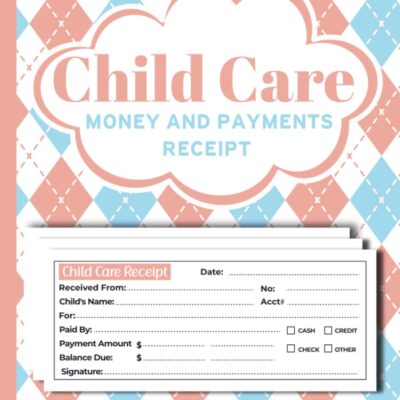
Have you ever wished you could wake up with perfect eyebrows every day?Microblading and Microshading might just be what you’re looking for! These popular beauty techniques can transform your brows with minimal effort. In this guide, we’ll break down everything you need to know about microblading and microshading—what they are, how they work, and how to choose the best option. Plus, we’ll give you some handy tips to make the most of these eyebrow wonders. Ready to dive in? Let’s get started!
What is Microblading?
A semi-permanent method called microblading produces more defined, fuller eyebrows. It involves using a tiny, handheld tool with to lay pigment into the skin. Think of it. Think of it as a way to draw on hair-like strokes that blend seamlessly with your natural brows.
How Microblading Works: During your appointment, the technician will map out your brows to find the perfect shape and color. Then, they use the microblading tool to create fine, hair-like strokes. The pigment used is custom-mixed to match your natural eyebrow color, so your new brows look natural.
Benefits of Microblading: Microblading is excellent for filling in sparse areas, improving shape, or making your eyebrows look fuller. It’s perfect if you want a natural look without the daily hassle of brow pencils. Usually, results run for one to three years, depending on your skin type and how well you follow aftercare instructions.
Longevity of Results: One of the best things about microblading is its longevity. Most people enjoy their new brows for about Twelve to eighteen months before they need a touch-up. Skin type and lifestyle can influence things like how long the results last.
What is Microshading?
Microshading, known as “powder b “ows” or “OMB” e br” ws,” gives “your eyebrows a soft, shaded effect. Instead of tiny strokes, a machine deposits tiny pigment dots into the skin that produce a filled-in look that resembles makeup.
Differences Between Microshading and Microblading
While both techniques enhance your brows, microshading offers a different finish. Microblading creates natural, hair-like strokes, whereas microshading provides a more defined, powdery look. Micro shading might be your go-to if you prefer a fuller appearance with less maintenance.
Benefits of Microshading
Microshading is excellent for those who want a softer, fuller look without needing daily brow makeup. It’s perfect for oily skin types and often requires fewer touch-ups than microblading. The results are long-lasting, making it a fantastic option for low-maintenance beauty.
Best Candidates for Microshading
Microshading works well for people with oily skin, those who like a more made-up appearance, or those who want a change from microblading. Micro shading could be a great option if you’ve hayou’veoblading before and are looking for something new.
Microblading vs. Microshading: Which One is Right for You?
Choosing between microblading and microshading can be tricky. Here’s a Here’s comparison to help you decide:
1. Microblading:
-
- Appearance: Natural, hair-like strokes
- Best For: Sparse brows, natural look
- Longevity: 1 to 3 years
- Maintenance: More frequent touch-ups
2. Microshading:
-
- Appearance: Soft, powdery fill
- Best For: Fuller brows, less maintenance
- Longevity: 1 to 3 years
- Maintenance: Fewer touch-ups
Think about your skin type, how you like your brows to look, and how much upkeep you’ll need. Both techniques have perks, so pick the one that matches your beauty goals!
How to Prepare for Microblading and Microshading
Preparing for your microblading or microshading appointment is essential for the best results. Here’s hoHere’srepare:
Pre-Procedure Tips:
-
- Skincare: Avoid using solid exfoliants or retinoids on your brows for a week before your appointment. These can make your skin extra sensitive.
- Medications: Let your technician know if you’re on your low-grade medications. They might ask you to stop them before your procedure to reduce bleeding.
What to Expect During the Appointment:
-
- Consultation: Your technician will discuss your brow goals, assess your skin, and design the perfect shape and color.
- Procedure: Depending on the technique, you’ll see fine strokes (microblading) or tiny dots (micro shading). The session usually takes about 1 to 2 hours.
Pain Management:
-
- Most people find the procedure tolerable. Your technician will numb using a cream to minimize discomfort. If you’re in pain, let them know so they can make you comfortable.
Aftercare for Microblading and Microshading
After the procedure, taking care of your brows is critical to keeping them looking great. Here’s what we need to do:
Essential Aftercare Tips:
-
- Keep Them Dry: Steer clear of moistening your eyebrows for the first 7 to 10 days. This means no swimming, sweating, or washing your face directly over your brows.
- Avoid Sun Exposure: Keep your brows out of direct sunlight and away from tanning beds. UV rays can fade the pigment and irritate your healing skin.
- Use a Healing Ointment: Your technician will probably recommend a specific ointment to moisturize your brows and help heal.
What to Avoid Post-Treatment:
-
- No Picking or Scratching: As your brows heal, they may scab or flake. Avoid picking at them to prevent scarring and color loss.
- No Makeup: Don’t apply makeup to your brows until fully healed to avoid irritation and infection.
Healing Process:
-
- Usually, the healing period is four to six weeks. As the pigment settles into your skin, you can detect some fading. Usually performed six to eight weeks following the first operation, a touch-up session aims to refine the results.
The Best Products to Use for Microbladed or Microshaded Brows
To keep your brows looking fabulous, here are some great products to consider:
Brow Care Products:
-
- Gentle Cleanser: Use a mild, non-exfoliating cleanser to wash your face without irritating your brows.
- Brow Gel: A clear brow gel can help keep your brow hairs in place and add a bit of shine.
Maintaining Results:
-
- Hydrating Products: Hydrate your skin and brows with gentle, non-irritating products to maintain color and prevent dryness.
Extending the Life of Your Brows:
-
- Regular Touch-Ups: Schedule touch-ups every 12 to 18 months to refresh your brows and address any fading.
Common Mistakes to Avoid
Even with DIY attempts, it’s easy to make a few mistakes. Here are the common pitfalls:
- Don’t OveDon’tt with Oils: Too much oil or moisturizer can affect healing. Stick to the recommended aftercare products.
- Mix Ingredients Carefully: If you’re using DIY products, ensure they’re for your skin type and won’t interfere with the healing process.
- Thorough Rinsing: Rinse off any leftover ointment or residue to prevent buildup.
FAQs about Microblading and Microshading
Here are answers to some frequently asked questions about microblading and microshading:
- How Often Do You Need Touch-Ups?: Most people need touch-ups every 12 to 18 months to keep their brows looking fresh.
- Does It Hurt?: Most people experience minimal discomfort thanks to numbing cream. If you’re about pain, let your technician know.
- How Much Do the Procedures Cost?: Costs vary, but microblading and microshading typically range from $300 to $800.
- Are There Risks Involved? Generally, both operations are safe when performed under qualified technicians. Risks include infection, allergic reactions, or unsatisfactory results if aftercare isn’t done.
Conclusion
Microblading and Microshading are fantastic ways to achieve beautiful, low-maintenance brows. By understanding the differences between these techniques, preparing correctly, and following aftercare instructions, you can enjoy stunning eyebrows that save you time and hassle. Whether you opt for the natural look of microblading or the polished finish of micro shading, these techniques can enhance your beauty routine and boost your confidence. So, consult a skilled technician, decide which is the perfect fit for you, and prepare to appreciate fabulous brows daily!
If you want to learn my #1 evpct 1Pcs Dark Brown Magic Microblading Dual-Ended Eyebrow , Click Here Now





